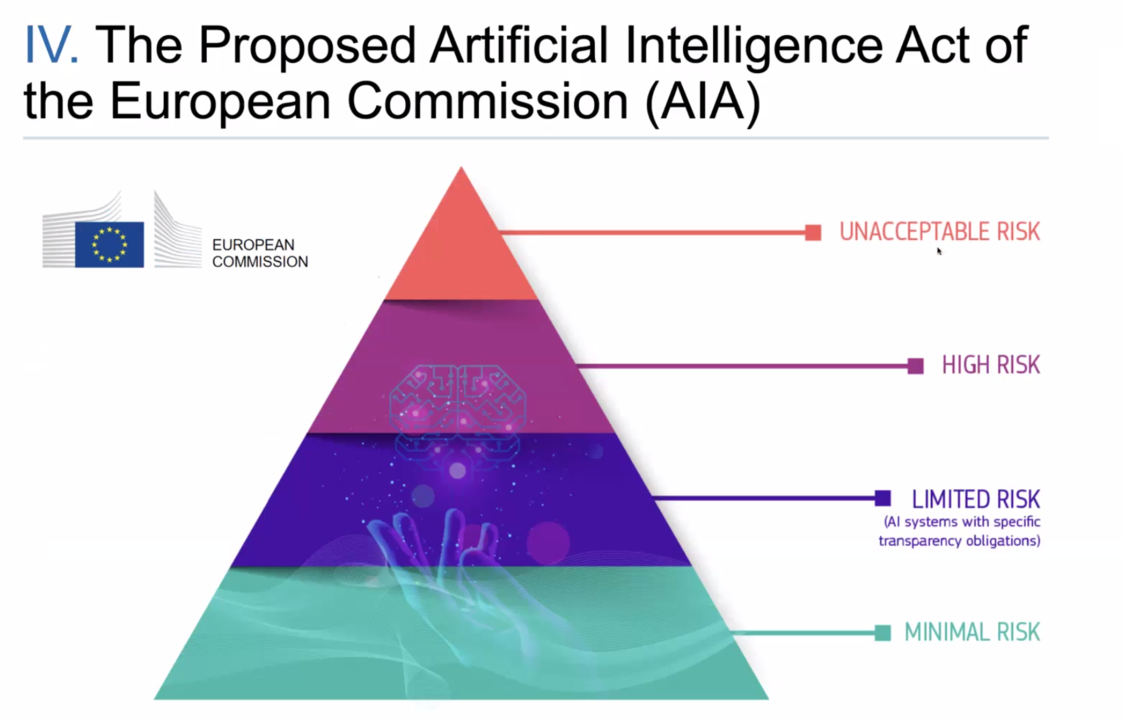A few weeks ago, the European Commission published their proposal for an Artificial Intelligence Act (AIA) - the first ever legal framework on AI, which addresses the risks of AI and positions Europe to play a leading role globally. At the beginning of this month’s HeiCAD Lecture, Jun.-Prof. Dr Johann Justus Vasel illustrated the previous process of AI regulation using three works of art: Jackson Pollock's "Number 32, 1950" as a symbol for the initially rather chaotic AI regulation landscape with many gaps and void spaces, Piet Mondrian's "Composition No. II, with Red and Blue" as a journey towards clear, transparent, structured, but also rigid and inflexible regulations with the colours red and blue as symbols for the relationships between China, Europe and the USA, and finally Yves Klein's "La Terre Bleue" as an illustration of the European vision of global regulation according to the AIA.
Subsequently, Jun.-Prof. Dr. Johann Justus Vasel provided some context and background regarding the history of AI regulations in Europe, regulatory challenges, pitfalls and hopes before extracting the four key policy objectives of the AIA: setting enabling conditions, making the EU the right place, ensuring AI technologies work for people and building strategic leadership in the sectors. He stressed that the AIA is a regulation, not a directive, which means it is a binding legislative act and must be applied in its entirety across the EU. Furthermore, it applies both publicly and privately in most areas.
Another very prominent characteristic of the AIA, interestingly seeming to respond to common fears regarding AI technologies that have been arisen in the past years, is the risk-based approach. Depending on whether AI applications are classified as minimal risk, limited risk, high risk or unacceptable risk, they are treated differently (self regulation and codes of conduct, transparency requirements, regulation and prohibition, respectively).
Critics of the AIA might argue it is too vague and ambiguous in places, or that it is quite cumbersome to handle. In addition, it is preempting member state regulations.
So the question remains - will Europe be able, by means of the AIA, to turn a Pollock into a Klein - and is the Brussels effect hitting again and the AIA becomes world standard, resembling "La Terre Bleue"? Only the future can tell.
Jackson Pollock’s “Number 32, 1950” is currently exhibited at K20 in Düsseldorf: www.kunstsammlung.de/en/collection/artists/jackson-pollock/.


